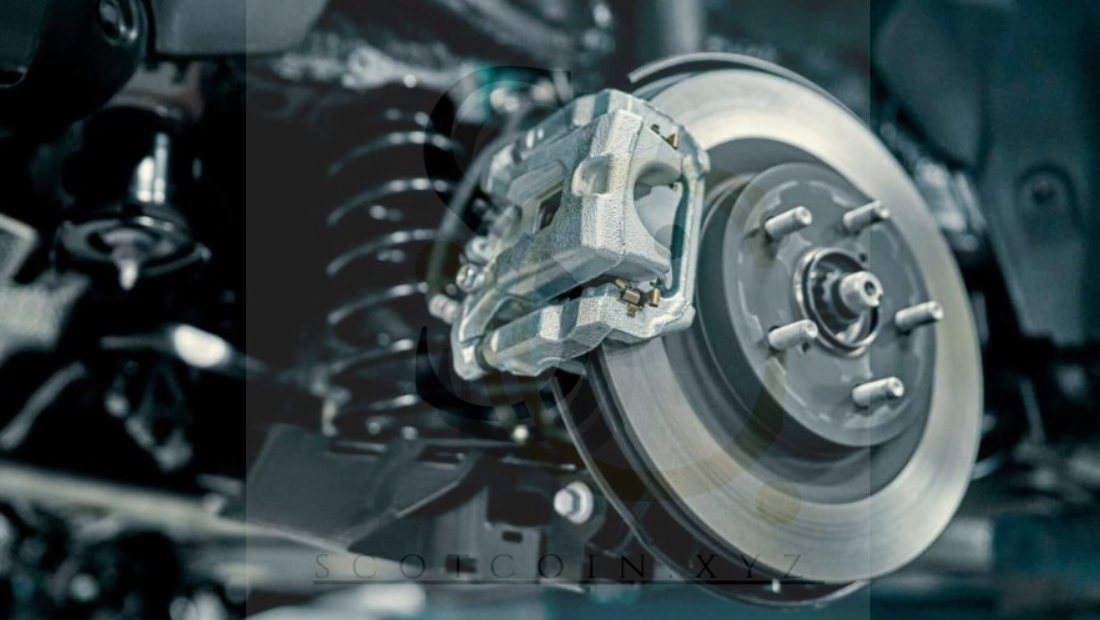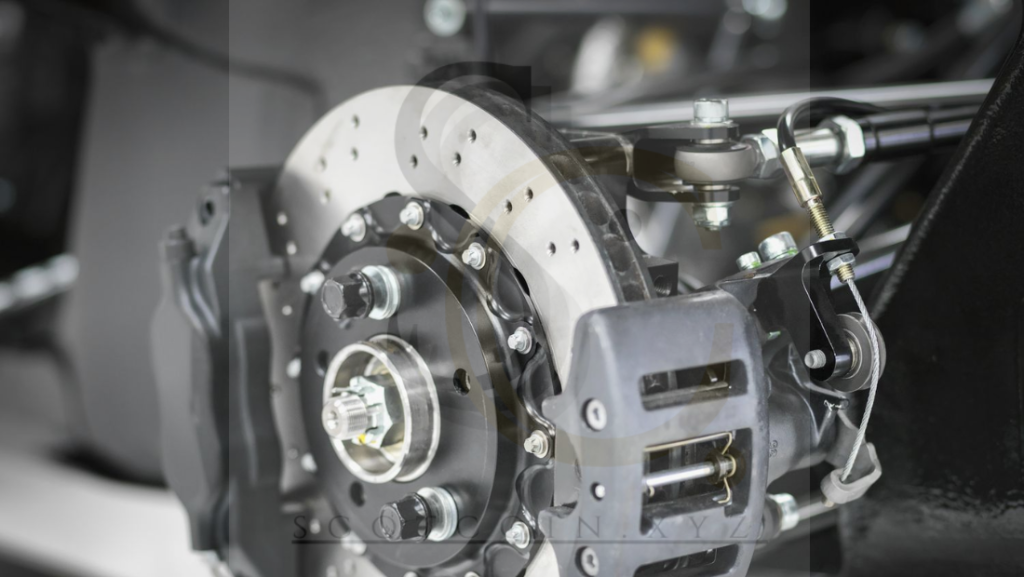Blog
Wheel Sensors for Cars: Essential for Anti-lock Braking Systems (ABS) and Traction Control
In modern vehicles, wheel sensors play a pivotal role in ensuring the safety and stability of your car. Integrated into systems like the Anti-lock Braking System (ABS) and traction control, these sensors help to improve vehicle handling, prevent skidding, and reduce the risk of accidents. Without wheel sensors, critical safety systems would be less effective, potentially compromising the driver’s control and the vehicle’s overall safety, particularly in adverse weather conditions or during emergency maneuvers.
This article delves into the function of wheel sensors in ABS and traction control systems, explains how these technologies work, and discusses the essential role they play in maintaining vehicle safety. By understanding how wheel sensors contribute to effective braking and traction, drivers can appreciate their importance in modern automotive safety.
What Are Wheel Sensors?
Wheel sensors are devices mounted on a vehicle’s wheels or axles that monitor the rotation of the wheels. These sensors detect how fast each wheel is turning and transmit that data to the vehicle’s central control unit. The data from wheel sensors is crucial for systems like ABS and traction control, which rely on precise wheel speed information to operate effectively.
These sensors can be either magnetic, optical, or inductive, but they all serve the same fundamental purpose: to detect and transmit information about the speed of the wheels to the vehicle’s safety systems. By providing real-time data, wheel sensors allow these systems to intervene when necessary, helping to prevent accidents caused by loss of control.
How Do Wheel Sensors Work in Anti-lock Braking Systems (ABS)?
The Anti-lock Braking System (ABS) is one of the most critical safety features in modern vehicles. ABS prevents the wheels from locking up during braking, which allows the driver to maintain steering control. The role of wheel sensors in ABS cannot be overstated, as they provide real-time information about the speed at which each wheel is rotating.
- Wheel Speed Detection
ABS relies on wheel sensors to detect any changes in wheel speed during braking. If a wheel is decelerating too quickly and is at risk of locking up, the ABS system will intervene by reducing brake pressure on that wheel. This allows the wheel to regain traction and prevents skidding, especially on slippery surfaces. - Real-Time Feedback for Braking Adjustment
Each wheel sensor continuously sends information about wheel speed to the ABS control unit. When the sensors detect a wheel locking, the system adjusts brake pressure on that wheel to prevent it from fully locking up. This process occurs in real-time, ensuring that the vehicle can continue to slow down effectively while maintaining steering control. - Prevention of Skidding and Loss of Control
The primary benefit of ABS is to prevent skidding and loss of control when a driver applies hard braking. With the help of wheel sensors, the system ensures that the wheels don’t lock, allowing the vehicle to maintain traction even in slippery conditions like rain, snow, or ice. This capability is vital for preventing accidents and providing safer emergency braking situations. - Improved Braking Performance
ABS enhances braking performance by ensuring that each wheel is braking at the optimal level. By continuously adjusting brake pressure based on the data provided by wheel sensors, the system ensures that all wheels maintain their grip on the road, providing a smoother, more effective stop.
How Wheel Sensors Contribute to Traction Control Systems (TCS)

Traction control is another vital safety feature that works in tandem with ABS to improve vehicle stability and prevent skidding. Traction control is especially useful in situations where a vehicle might lose grip on the road, such as during acceleration on wet or icy surfaces. Wheel sensors play a significant role in detecting and preventing this loss of traction.
- Detecting Wheel Slip
When a vehicle is accelerating, wheel sensors monitor the speed of the wheels. If one wheel begins to spin faster than the others, indicating that it has lost traction, the traction control system (TCS) will step in to reduce the speed of the spinning wheel and redistribute power to the wheels that have better traction. - Maintaining Optimal Grip on Slippery Roads
Whether driving in snow, rain, or on loose gravel, maintaining traction is essential for safe driving. Wheel sensors help the traction control system detect when a wheel is slipping and make adjustments accordingly, either by applying brakes to the slipping wheel or reducing engine power. This prevents further slipping and helps the vehicle regain traction more quickly. - Prevention of Wheel Spin
By working together with the ABS and engine control systems, wheel sensors help TCS prevent excessive wheel spin during acceleration. This is particularly important when driving on slippery or uneven surfaces, as excessive wheel spin can cause the vehicle to lose stability and control. - Enhanced Safety in Adverse Conditions
In challenging weather conditions, such as heavy rain or snow, traction control systems prevent wheel spin and loss of grip, thanks to the data provided by wheel sensors. This ensures that drivers maintain better control of their vehicle, reducing the likelihood of accidents caused by skidding.
Why Wheel Sensors Are Essential for Vehicle Safety
Wheel sensors are integral to a wide range of vehicle safety systems, and their role in ABS and traction control is just the beginning. Here are some of the key reasons why wheel sensors are essential for modern car safety:
- Improved Braking Control
Without wheel sensors, safety systems like ABS would be far less effective. These sensors provide real-time information that allows the vehicle to respond dynamically to changes in road conditions, ensuring that braking is applied effectively and that steering control is maintained. - Enhanced Stability and Traction
Wheel sensors play a critical role in maintaining traction, especially during acceleration or when driving on slippery roads. Whether it’s preventing wheel spin with traction control or ensuring that all wheels have equal braking power with ABS, these sensors help keep your vehicle stable and in control. - Reduced Risk of Skidding
Skidding, particularly on wet or icy roads, is one of the leading causes of accidents. Wheel sensors help prevent skidding by ensuring that your vehicle’s braking and acceleration systems are adjusted in real-time to optimize traction and stability. - Increased Confidence for Drivers
Knowing that your vehicle is equipped with advanced wheel sensors and safety systems provides peace of mind. These sensors ensure that your car can handle a variety of road conditions and driving situations, allowing you to drive with greater confidence. - Proactive Safety Measures
Many modern vehicles also integrate wheel sensors into other safety systems, such as lane-keeping assist and automated emergency braking. By continuously monitoring wheel performance, these sensors allow the vehicle to respond proactively to potential risks, preventing accidents before they happen.
Common Types of Wheel Sensors
There are several different types of wheel sensors, each designed to serve a particular function in the vehicle’s safety systems. Here are the most common types:
- Magnetic Sensors
Magnetic wheel sensors use a rotating magnet and sensor to measure wheel speed. These are some of the most common types used in ABS systems and traction control. - Inductive Sensors
Inductive sensors use a coil and magnetic field to detect changes in wheel speed. They’re commonly found in modern ABS and stability control systems due to their durability and precision. - Optical Sensors
Optical wheel sensors use light to measure wheel speed. These sensors are highly accurate but are generally used in more advanced systems that require extremely precise measurements. - Hall Effect Sensors
Hall effect wheel sensors detect the magnetic field generated by rotating wheels. These sensors are reliable and commonly used in vehicles with more advanced safety features.
The Future of Wheel Sensors in Vehicle Safety
As automotive technology continues to evolve, the role of wheel sensors in enhancing vehicle safety will only increase. With the rise of autonomous vehicles and advanced driver-assistance systems (ADAS), wheel sensors will continue to be a fundamental component of vehicle control, helping to prevent accidents and improve driver confidence.
Future advancements in wheel sensors may include better integration with other vehicle systems, enhanced accuracy, and greater responsiveness to road conditions. As these technologies become more sophisticated, wheel sensors will play an even larger role in preventing skidding, improving traction, and maintaining vehicle stability, making driving safer for everyone on the road.
Conclusion: The Vital Role of Wheel Sensors for Safety
Wheel sensors are an indispensable part of modern vehicles, playing a critical role in maintaining stability, preventing skidding, and ensuring optimal traction. Their integration with ABS, traction control, and other safety systems provides comprehensive protection, helping drivers maintain control under various driving conditions. Whether you’re driving in wet conditions, making a hard stop, or accelerating on slippery roads, wheel sensors provide real-time feedback that allows your vehicle to respond instantly, ensuring safety and enhancing overall performance.
By investing in a vehicle equipped with these advanced safety features, you’re not just improving your car’s handling—you’re investing in your own safety and the safety of others on the road. With wheel sensors working in conjunction with other vehicle technologies, you can drive with confidence, knowing that your car is constantly monitoring and adjusting to keep you in control.



